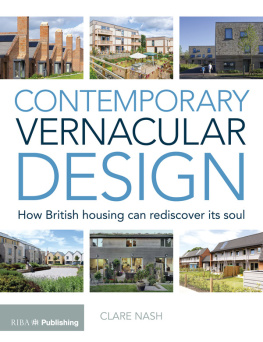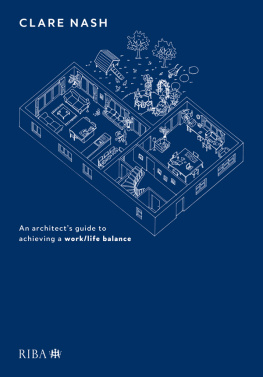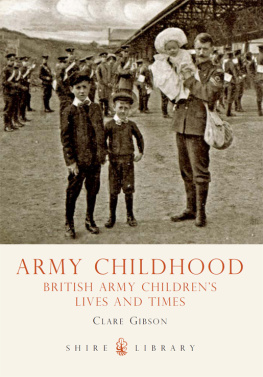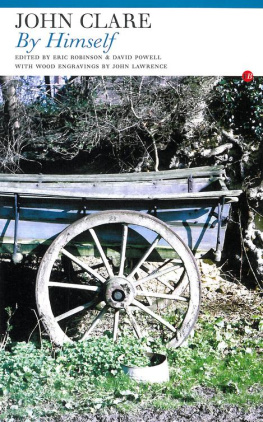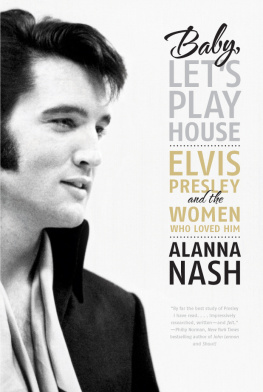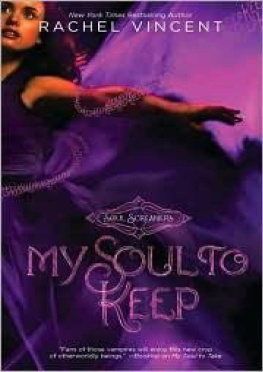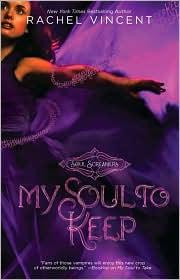Clare Nash - Contemporary vernacular design : how British housing can rediscover its soul
Here you can read online Clare Nash - Contemporary vernacular design : how British housing can rediscover its soul full text of the book (entire story) in english for free. Download pdf and epub, get meaning, cover and reviews about this ebook. year: 2019, publisher: RIBA Publishing routledge, genre: Romance novel. Description of the work, (preface) as well as reviews are available. Best literature library LitArk.com created for fans of good reading and offers a wide selection of genres:
Romance novel
Science fiction
Adventure
Detective
Science
History
Home and family
Prose
Art
Politics
Computer
Non-fiction
Religion
Business
Children
Humor
Choose a favorite category and find really read worthwhile books. Enjoy immersion in the world of imagination, feel the emotions of the characters or learn something new for yourself, make an fascinating discovery.
- Book:Contemporary vernacular design : how British housing can rediscover its soul
- Author:
- Publisher:RIBA Publishing routledge
- Genre:
- Year:2019
- Rating:4 / 5
- Favourites:Add to favourites
- Your mark:
- 80
- 1
- 2
- 3
- 4
- 5
Contemporary vernacular design : how British housing can rediscover its soul: summary, description and annotation
We offer to read an annotation, description, summary or preface (depends on what the author of the book "Contemporary vernacular design : how British housing can rediscover its soul" wrote himself). If you haven't found the necessary information about the book — write in the comments, we will try to find it.
Clare Nash: author's other books
Who wrote Contemporary vernacular design : how British housing can rediscover its soul? Find out the surname, the name of the author of the book and a list of all author's works by series.
Contemporary vernacular design : how British housing can rediscover its soul — read online for free the complete book (whole text) full work
Below is the text of the book, divided by pages. System saving the place of the last page read, allows you to conveniently read the book "Contemporary vernacular design : how British housing can rediscover its soul" online for free, without having to search again every time where you left off. Put a bookmark, and you can go to the page where you finished reading at any time.
Font size:
Interval:
Bookmark:

RIBA Enterprises Ltd, 2016
Published by RIBA Publishing,
part of RIBA Enterprises Ltd, The Old Post Office,
St Nicholas Street, Newcastle upon Tyne, NE1 1RH
ISBN: 978-1-85946-584-4 (pbk)
ISBN: 978-1-85946-781-7 (pdf)
The right of Clare Nash to be identified as the Author of this Work has been asserted in accordance with the Copyright, Design and Patents Act 1988.
All rights reserved. No part of this publication may be reproduced, stored in a retrieval system, or transmitted, in any form or by any means, electronic, mechanical, photocopying, recording or otherwise, without prior permission of the copyright owner.
British Library Cataloguing-in-Publications Data
A catalogue record for this book is available from the British Library.
Commissioning Editor: Fay Gibbons
Copy Editor: Ian McDonald
Project Editor: Phil Handley
Designed and typeset by Ashley Western
Printed and bound by W&G Baird Ltd, Great Britain
While every effort has been made to check the accuracy and quality of the information given in this publication, neither the Author nor the Publisher accept any responsibility for the subsequent use of this information, for any errors or omissions that it may contain, or for any misunderstandings arising from it.
www.ribaenterprises.com
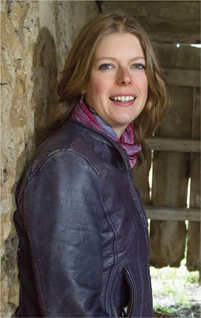
CLARE NASH is a chartered architect and founder of Clare Nash Architecture, a five-person, all-female practice. Specialising in rural energy-efficient architectural design, CNAs focus takes inspiration from the vernacular focusing on people, site, climate, location, context, and sustainable and beautiful materials to produce buildings that sit well in their surroundings and suit the people who reside in them. Clare has studied vernacular architecture under Paul Oliver, Aylin Orbasli and Marcel Vellinga, both in the UK and abroad, and has a masters in the subject from Oxford Brookes University, where she also teaches architectural technology. She also serves as a RIBA role model, encouraging diversity within the profession.
Firstly, an apology: there were many other schemes that I would have liked to feature in this book due to their interpretation of Contemporary Vernacular Design. Some of these were not included because they were not housing, others because, very sadly, I simply could not fit them in.
A special thank you to the following:
James , thank you for your patience and support despite the feeling that the book would never end. Also for dragging me away from the computer screen on regular occasions.
My parents , for their general ethos: nothing ventured, nothing gained.
Paul Oliver, Aylin Orbasli and Marcel Vellinga , for opening my eyes to vernacular architecture and changing the course of my career.
All of the contributors : architects, developers, housing associations and residents . Thank you for the time you found to answer my questions and provide information.
Julia Phillips , who has been wonderful at editing, researching, organising and translating.
Katie Reilly , who read the entire manuscript, giving me feedback at an early stage.
Piers Taylor , for agreeing to be a part of this book and for ongoing support and encouragement.
Hattie Hartman , for a very helpful review and time taken helping to craft the book.
Fay Gibbons, Sharla Plant, Phil Handley and James Hutchinson of RIBA Publishing for their patience, understanding and attention to detail, also Ian McDonald (copy editor).

Great Britain has some of the most beautiful, appropriate and resilient housing in the world. The majority of this housing was built before 1940, was not designed by architects, and forms the backbone of our towns, villages and cities. In many ways, it used to be so easy: we built unselfconsciously, using local materials, customs and techniques effortlessly forming our own vernacular.
Since the Second World War, however, almost all of the housing stock that we have produced has been substandard to the point that it has wrecked many of the towns and villages that had survived unscathed for generations. This was caused by poor planning policy and urban design, ideologically misguided architects and, perhaps most importantly, the shortsighted selfishness of volume housebuilders who refuse to put good design before quick profit.
Most volume housing has not been designed by architects but to a certain extent, our vernacular housing showed that it didnt necessarily need to be. If we followed certain fundamental rules of thumb, we could create decent, ordinary, resilient houses that together formed a cohesive beauty greater than a collection of individual buildings.
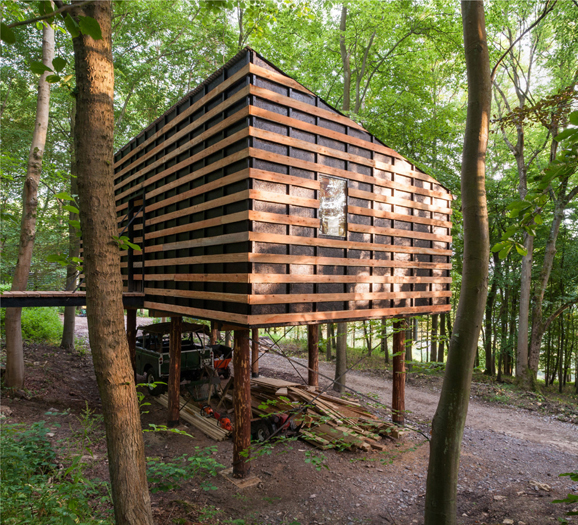
Piers Taylors Visible Studio near Bath.
The housing that was designed (often overdesigned) by architects in the postwar period didnt fare much better communities were uprooted and rehoused in buildings lacking the fundamental ingredients that allowed those communities to re-form and thrive in the way that they had previously.
The ability of housing to become place making has, by and large, become lost from our nations psyche. The tyranny of the dream home, perpetuated by populist TV programmes, means that many people aspire to a statement, detached dwelling with a double garage and a sea of tarmac rather than the simple dignity of a house, in a street, that purposely subjugates its own individuality for the greater good of place. This latter type of housing the house that becomes the street, that becomes the neighbourhood, that becomes the town is effortlessly democratic.
This does not mean that we need to hark back to a mythical golden age of prewar housing: on the contrary, as Clare Nash has painstakingly researched, there is much contemporary housing that is exceptional, and shows what is possible in any context in the UK.
Much of the housing that Clare writes about in this book is affordable, alluring, durable and democratic, and shows there is another way to that provided by the volume housebuilders. Clares study shows how well we can do it when we want to. She restates the importance and significance of the ordinary, the everyday and the vernacular. In the face of the impending ransacking of the landscape by new and inappropriate housing, Clares exemplars show the potential for a beautiful built future to house successive generations effectively.
A manifesto for change, this book needs to be thrust into the hands of all developers and housebuilders. It also needs to be read by everybody else to wean us off our addiction to the false promise of the exclusive, individual luxury home. Let us hope that we can look forward to a new era of effortless, vernacular place making, using the building blocks of the versatile and appropriate housing shown here.
PIERS TAYLOR, INVISIBLE STUDIO
I love the British ability to be unconventional and witty, to push boundaries and ignore rules. Our creative talents are highly sought after in fashion, music and architecture. We embrace technological change at alarming rates. Yet it is shocking how little we apply these talents to our housing. The edges of our towns have become submerged in a sea of red brick, applied to building forms that look the same whether you are in Southampton or Northampton. We need only drive an hour or so away to hear a very different regional accent, yet regional variation in new-build housing has all but disappeared. The UK is a rich composition of diversity; why cant this be evident in our housing? It doesnt seem fair that the majority are required to live in identikit brick boxes, the only hint of the occupant within being a flowerpot or some curtains. These homes have no sense of place, do not encourage community spirit and offer extremely low space and design standards. Residents have told me they feel contained.
Font size:
Interval:
Bookmark:
Similar books «Contemporary vernacular design : how British housing can rediscover its soul»
Look at similar books to Contemporary vernacular design : how British housing can rediscover its soul. We have selected literature similar in name and meaning in the hope of providing readers with more options to find new, interesting, not yet read works.
Discussion, reviews of the book Contemporary vernacular design : how British housing can rediscover its soul and just readers' own opinions. Leave your comments, write what you think about the work, its meaning or the main characters. Specify what exactly you liked and what you didn't like, and why you think so.

